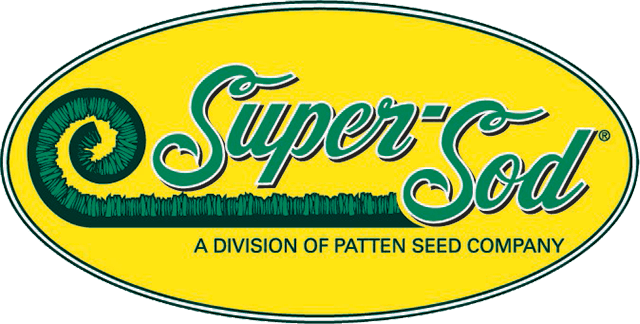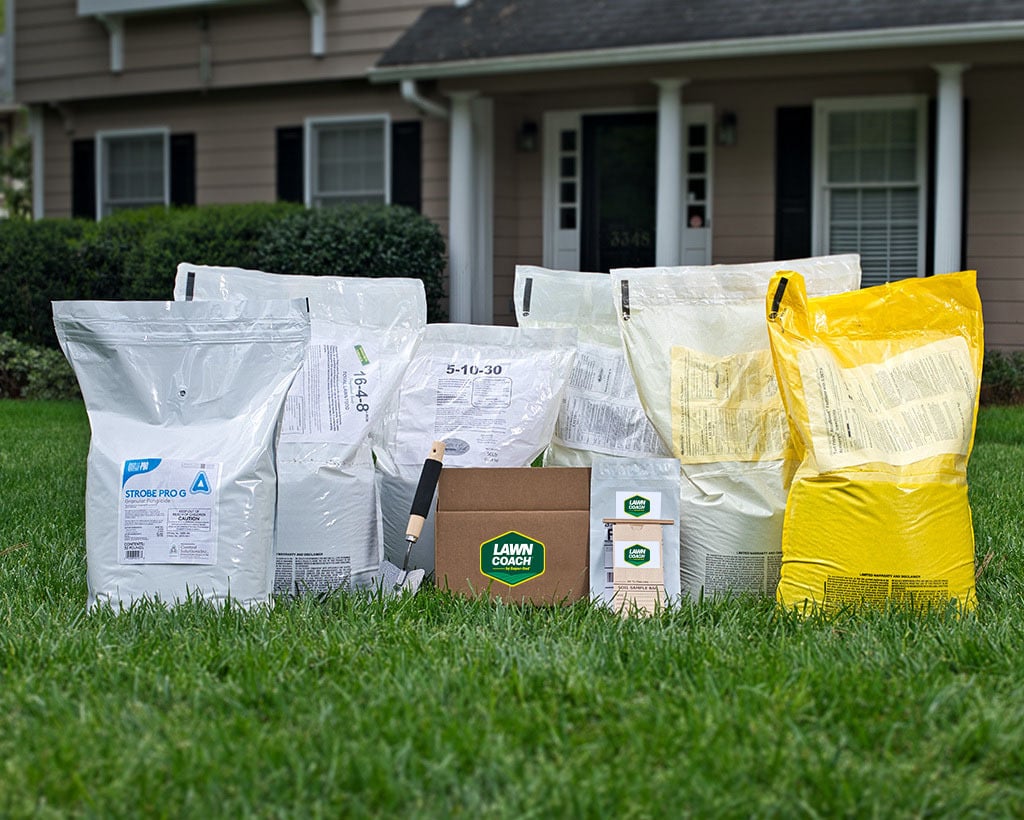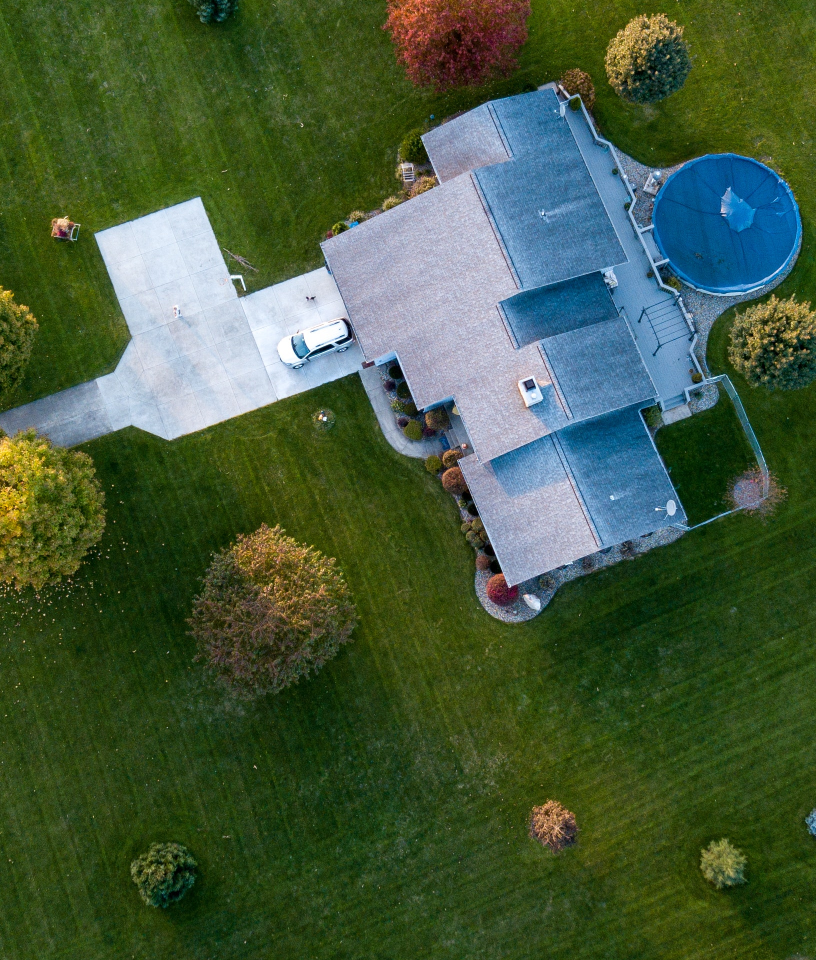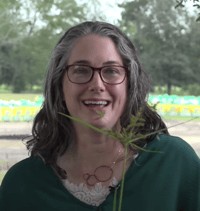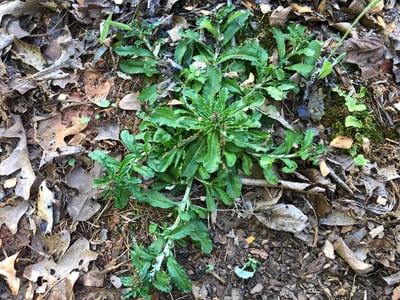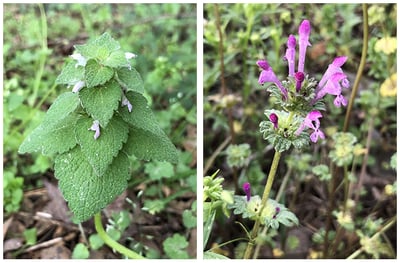
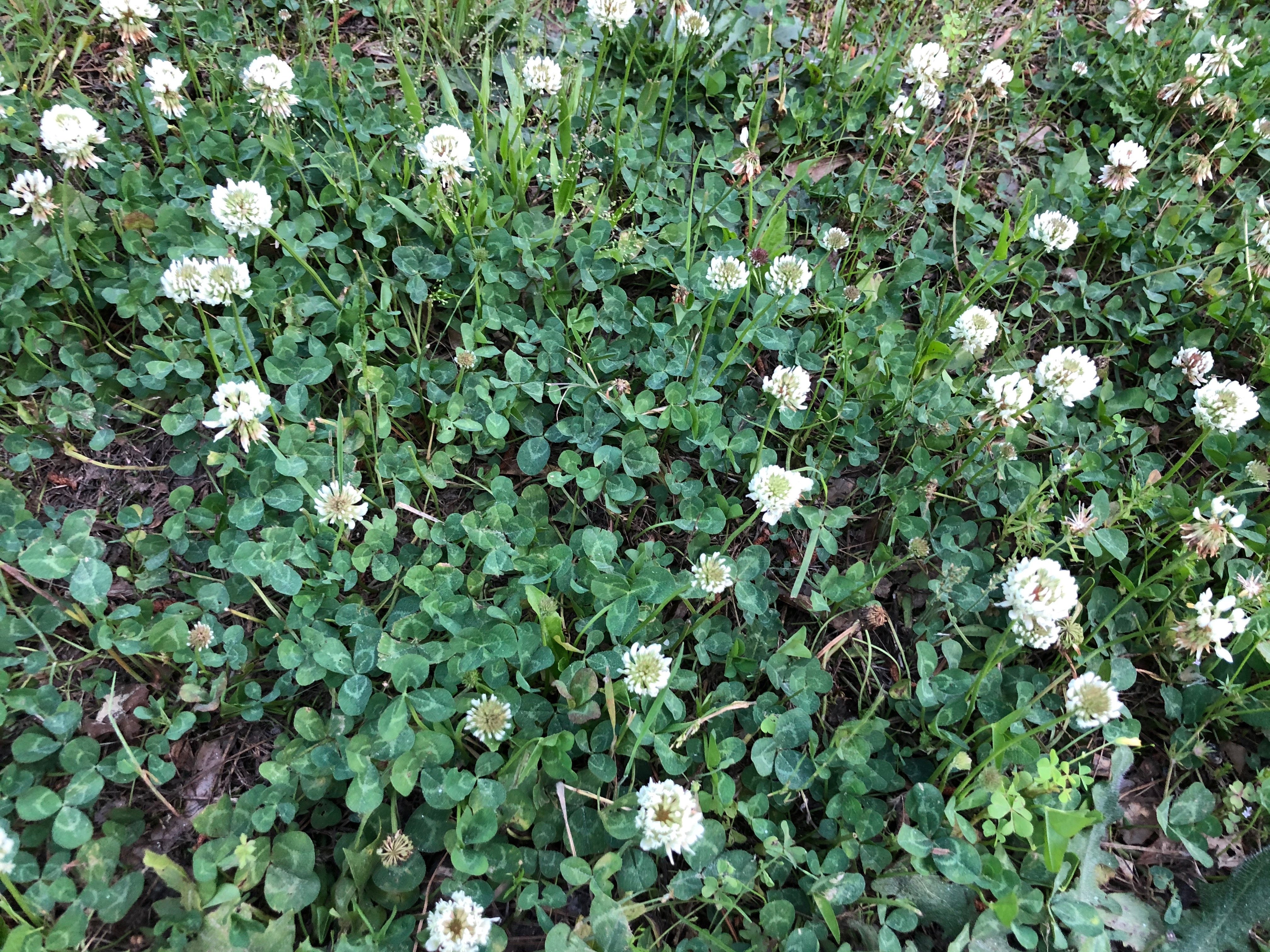
Today's featured weed is Trifolium repans aka white clover or Dutch white clover. We'll cover how to identify and control it.
There are many types of clover, but white clover is the common clover in lawns throughout the South. Some folks even plant it in their lawns (especially in Tall Fescue) on purpose because white clover fixes nitrogen, while others want to eradicate it. Isn't it interesting that some love it while others don't?
Viewing Tip: Increase the volume and the playback speed according to your preferences. Volume control is the speaker icon on the lower left; playback speed is the gear button on the lower right.
White Clover ID Features:
To control white clover, we first need to learn how to identify it.
- Family: White clover is a perennial plant in the Fabaceae family, commonly called the pea family or simply a legume
- Habit: Loose habit due to spreading stems and the long stems that hold up the leaves and flowers, yet when gets a foothold in a bare spot, it can form a dense mat that shades out the turf in that area
- Flowers: Round, white heads of tiny flowers; if you look at each individual flower on the head, you'll see that it looks like a tiny pea flower
- Leaves: Green with cream-colored chevrons, typically 3 leaflets per leaf, but sometimes with the lucky 4 (and even 5) leaves
- Stems: White clover spreads by stolons or "spreading stems" that form patches; when you weed this out by hand, you want to dig along the spreading stems to get them all out
Do you see the four leaf clover in this picture?
Note the lighter green or cream-colored chevrons marking each leaflet.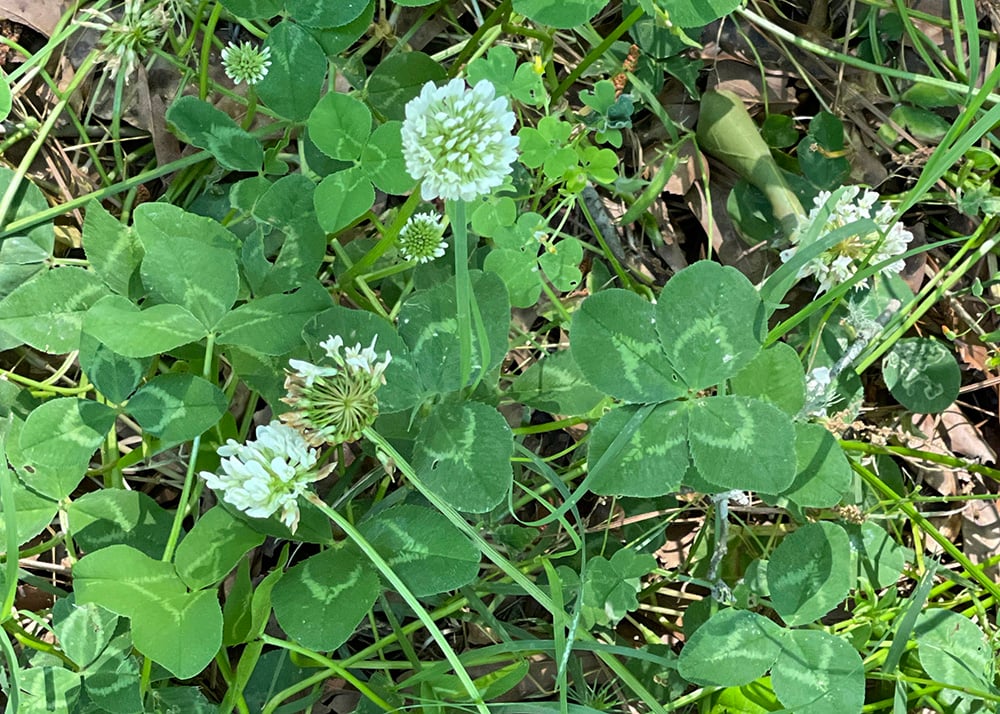
There are many tiny pea flowers that make up the round flower head of white clover.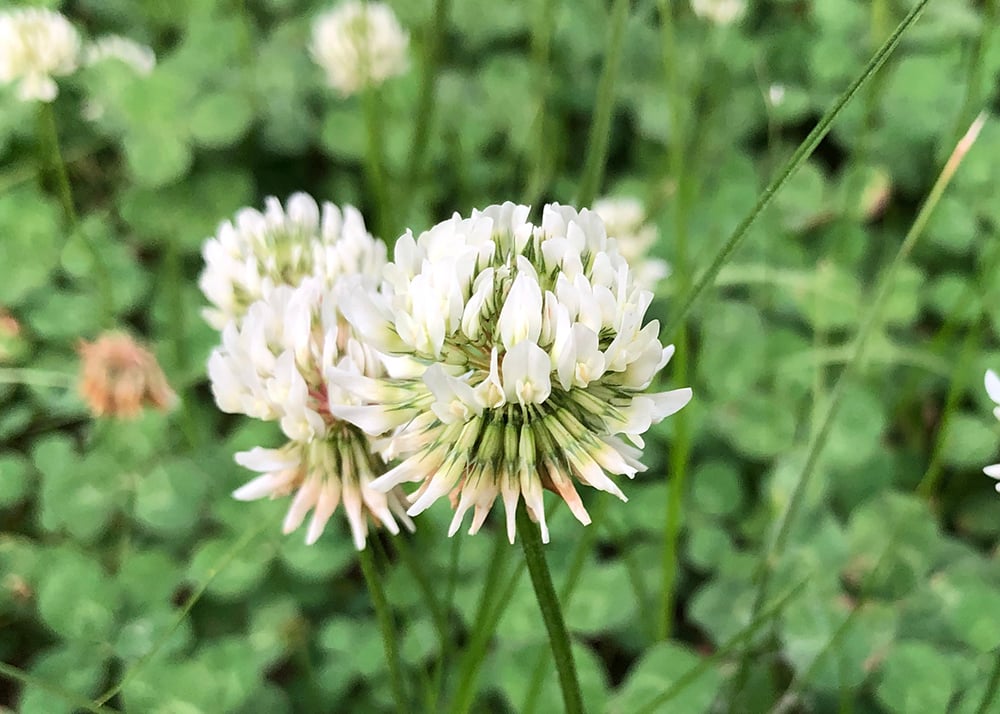
Clovers are all over the place in lawns and flower beds and especially in fields and along roadsides. Two other common clovers in the Southeast are:
- Crimson clover (Trifolium incarnatum): I plant crimson clover near the road every autumn so the neighborhood can enjoy the swaths of red flowers in April. It's a beautiful flower and now other neighbors scatters crimson clover seed in September too.
- Common yellow woodsorrel or lemon clover (Oxalis stricta): This is not really a clover because it's not in the pea family and therefore doesn't fix nitrogen - the leaves look like clover leaves though, but the flowers don't.
Learn more about clovers from these websites:
- NC State Extension lists many clovers & related species
- Clemson Home & Garden Information Center has articles on clover & related species
- UGA lists several clovers & related species
"Somebody" goes crazy planting crimson clover every fall. Compare the weak crimson clover growth in the compacted, barren roadside soil (left) with the vigorous, dark green growth (right) where I planted shrubs and topdressed with Soil³ compost. While crimson clover enriches bad soils over time, it sure does love the good stuff too.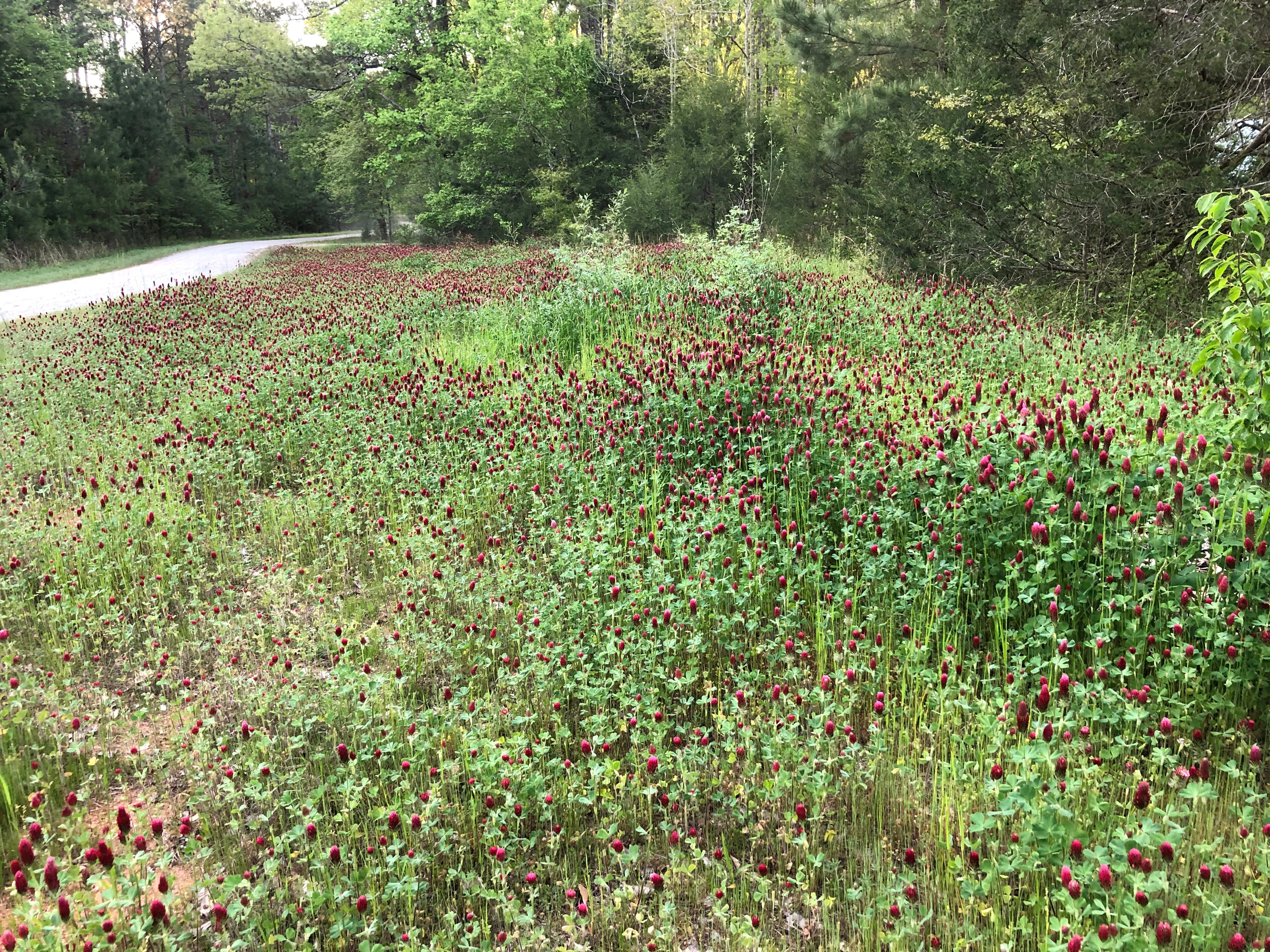
Eat it or Treat it - How to Control White Clover
White clover is also edible - both the leaves and the flowers. So far in this series, 6 out 6 weeds have been edible in some way or another. Also, I see bees bumbling around for pollen on the flowers.
Bonus: Clovers fixes nitrogen. What is fixing? It's the ability of many plants in the pea family to take nitrogen from the air and add it to the soil. They do this in conjunction with bacteria that grows on their roots. For this reason, legumes are valued as cover crops to improve poor soils.
Please watch the video to learn more about the benefits of clover.
White Clover Prevention:
- In September spread pre-emergent herbicide to prevent germination of winter weeds, such as white clover. The spreading properties of clover won't be affected by pre-emergent, but it will prevent more seeds from germinating. This is a plant that definitely needs pre- and post-emergent for control, so see "Chemical" below. Come by for products or sign up for Lawn Coach.
- Prevent clover in beds with thick layers of mulch and by cultivating a thick, healthy lawn. Since clover fixes nitrogen, I let it grow in flower beds and areas I eventually want to turn into flower beds that are lean and lacking in organic matter - I let it start to do the work for me of building better soil.
Manual Removal of White Clover:
- Hand pulling white clover is not very easy because those spreading stems are tenacious! It can be done though. Get a good hand weeding tool that fits your technique and sit down to go slow and grub out those stolons. This hand plow from Red Pig has been my favorite weeder for 15 years now.
- Mow to keep larger plants from going to seed and spreading to other parts of your lawn.
This area of my Zoysia lawn is hardpan soil in shade so it thinned out and clover took hold during the first growing season. Last summer I took better care of it, so the lawn is denser and suppresses new populations from establishing. Now that this article is written and I have a picture, I'll go root it out with my hand plow from Red Pig.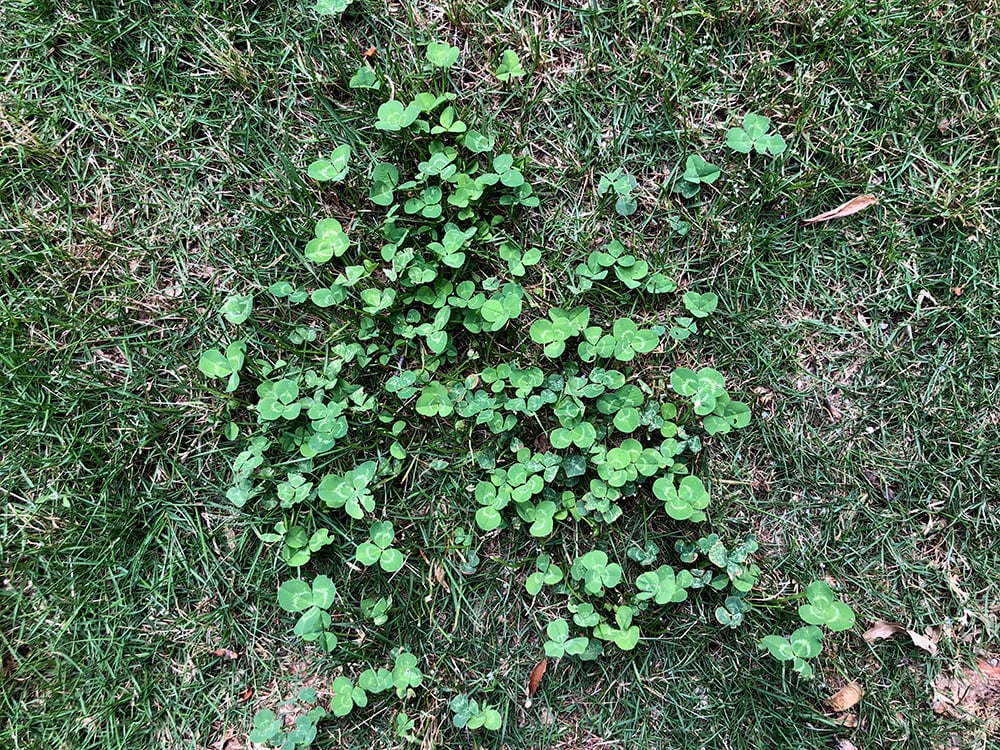
Chemical Control of White Clover:
- Use a post-emergent herbicide for broadleaf weeds, such as our Three-D post-emergent herbicide. With clover, it’s typically going to take multiple applications because it grows through stolons and is hard to get all at once. Surfactants help by coating the leaf blades so the herbicide stays in contact with the leaf longer. Come by for products, order online by clicking the links in this paragraph, or sign up for Lawn Coach.
Questions? Leave a comment below.
If you're a weed aficionado like me, check back here for future weed profiles. Until then, happy weeding!
All pictures by Hillary Thompson.

